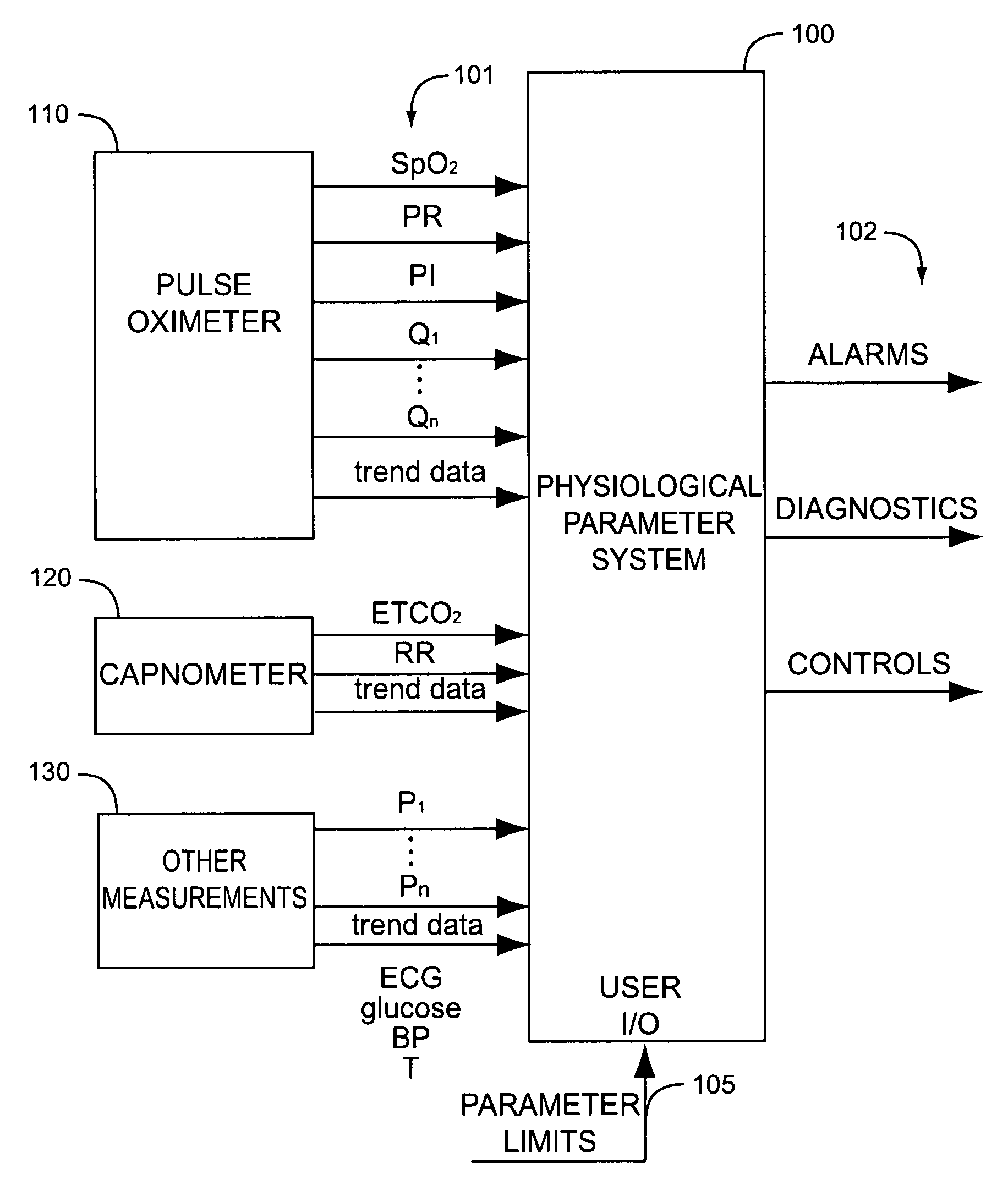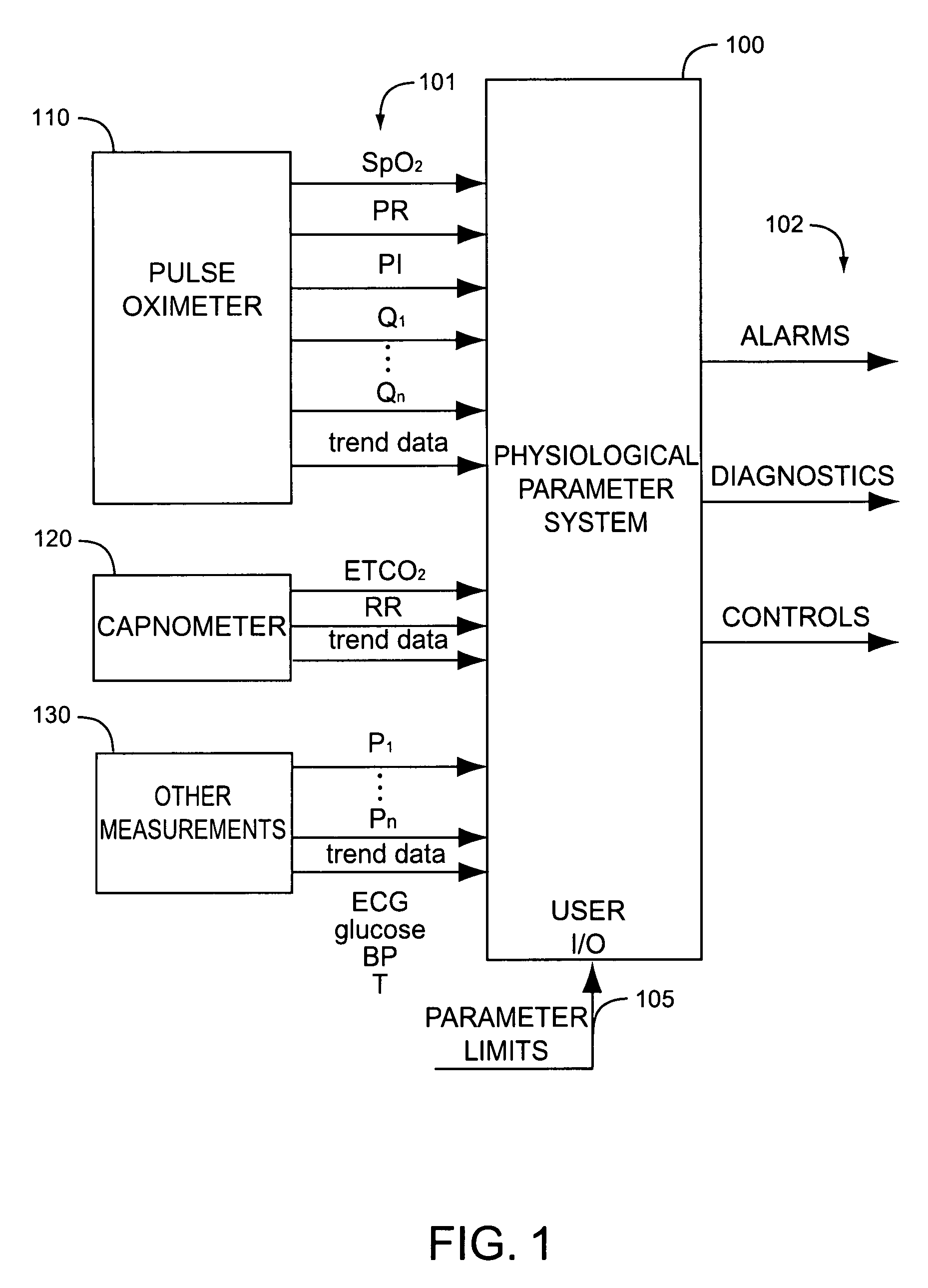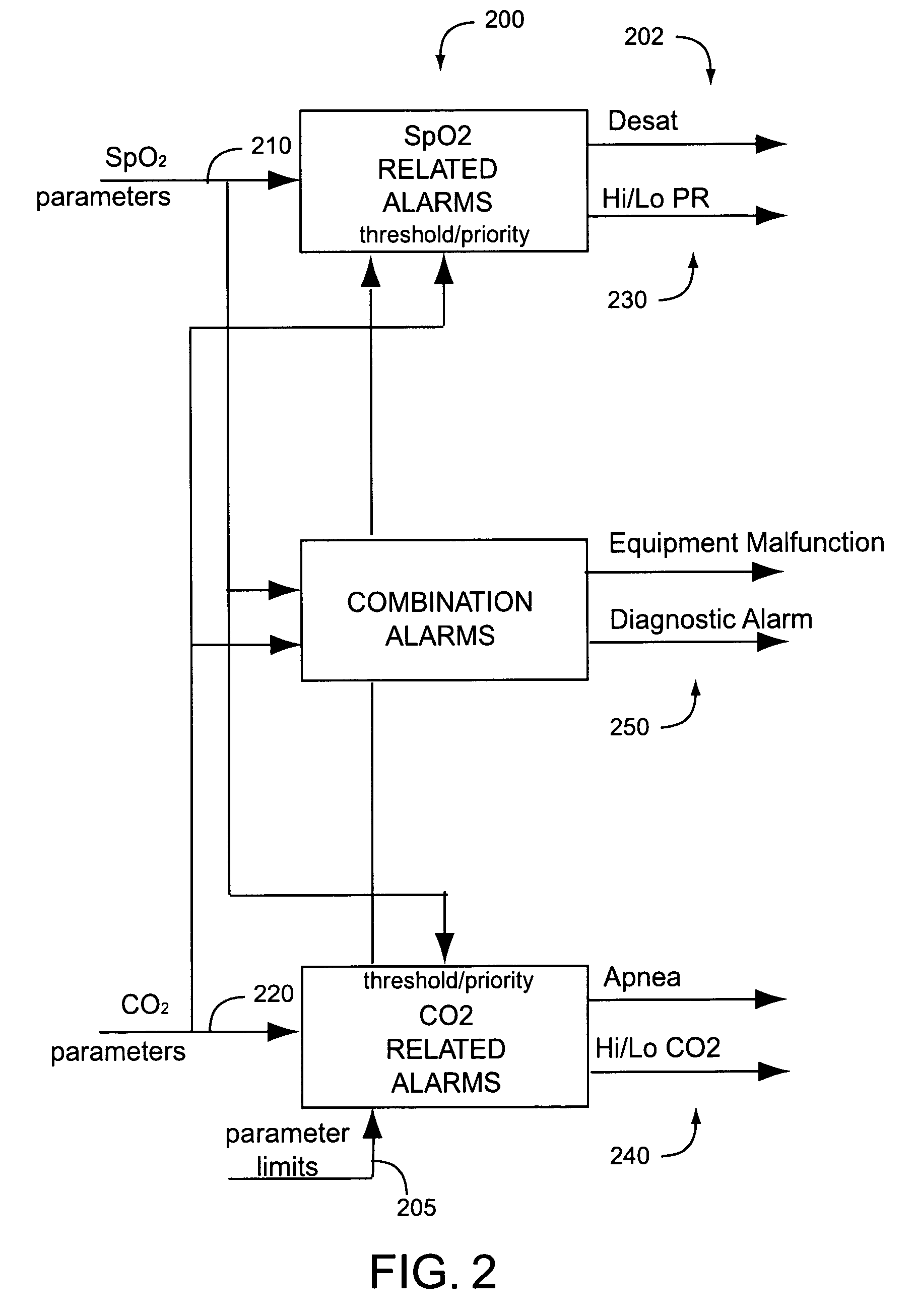Physiological parameter system
a physiological parameter and parameter technology, applied in the field of physiological parameter system, can solve the problems of patient being erroneously denied pain medication, slow development of hypovolemia, and airway obstruction of patients, and achieve the effect of powerful patient condition assessment tool and greater confiden
- Summary
- Abstract
- Description
- Claims
- Application Information
AI Technical Summary
Benefits of technology
Problems solved by technology
Method used
Image
Examples
embodiment 300
[0019]FIG. 3 illustrates a SpO2 alarm embodiment 300 that is responsive to ETCO2. In particular, a SpO2 alarm 305 may be triggered sooner and may indicate a high priority if ETCO2 303 is falling. That is, if ETCO2 303 is trending down above a certain rate, the SpO2 alarm 305 is triggered at a higher percentage oxygen saturation threshold and alerts a caregiver to the possibility of a serious condition, e.g. a pulmonary embolism.
[0020]As shown in FIG. 3, a slope detector 310 determines the slope 312 of the ETCO2 input 303. A slope comparator 320 compares this slope 312 to a predetermined slope limit 304. If the downward trend of ETCO2 303 is great enough, a delta value 303 is added 340 to the SpO2 lower limit 302 to generate a variable threshold 342. A threshold comparator 350 compares this variable threshold 342 to the SpO2 input 301 to generate a trigger 352 for the SpO2 alarm 305. The alarm volume, modulation or tone may be altered to indicate priority, based upon the slope compar...
embodiment 400
[0021]FIG. 4 illustrates a CO2 alarm embodiment 400 that is responsive to SpO2. In particular, morphology of the input CO2 waveform 401 is utilized to trigger an alarm 405, and that alarm is also responsive to a falling SpO2 402. That is, if a pattern in the expired CO2 waveform is detected and SpO2 is trending down above a certain rate, then an alarm is triggered. For example, an increasing slope of the CO2 plateau in combination with a downward trend of SpO2 may trigger an alarm and alert a caregiver to the possibility of an airway obstruction.
[0022]As shown in FIG. 4, a pattern extractor 410 identifies salient features in the CO2 waveform and generates a corresponding feature output 412. A pattern memory 420 stores one or more sets of predetermined waveform features to detect in the CO2 input 401. The pattern memory 420 is accessed to provide a feature template 422. A feature comparator 430 compares the feature output 412 with the feature template 422 and generates a match output...
embodiment 500
[0023]FIG. 5 illustrates a combination embodiment 500 having a diagnostic output 505 responsive to both SpO2 501 and ETCO2 503 inputs. A SpO2 slope detector 510 determines the slope 512 of the SpO2 input 501 and can be made responsive to a negative slope, a positive slope or a slope absolute value. A first comparator 520 compares this slope 512 to a predetermined SpO2 slope limit 502. If the trend of SpO2 501 is great enough, a SPO2 slope exceeded output 522 is asserted. Likewise, an ETCO2 slope detector 530 determines the slope 532 of the ETCO2 input 503. A second comparator 540 compares this slope 532 to a predetermined ETCO2 slope limit 504. If the downward trend of ETCO2 501 is great enough, an ETCO2 slope exceeded output 542 is asserted. If both slope exceeded outputs 522, 542 are asserted or “true,” a diagnostic output 505 is asserted.
[0024]In one embodiment, the slope detectors 510, 530 are responsive to a negative trend in the SpO2 501 and ETCO2 503 inputs, respectively. Acc...
PUM
 Login to View More
Login to View More Abstract
Description
Claims
Application Information
 Login to View More
Login to View More - R&D
- Intellectual Property
- Life Sciences
- Materials
- Tech Scout
- Unparalleled Data Quality
- Higher Quality Content
- 60% Fewer Hallucinations
Browse by: Latest US Patents, China's latest patents, Technical Efficacy Thesaurus, Application Domain, Technology Topic, Popular Technical Reports.
© 2025 PatSnap. All rights reserved.Legal|Privacy policy|Modern Slavery Act Transparency Statement|Sitemap|About US| Contact US: help@patsnap.com



